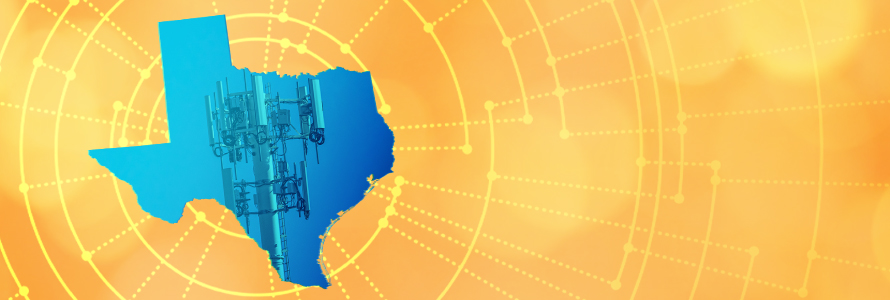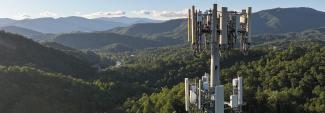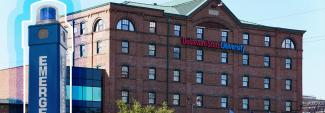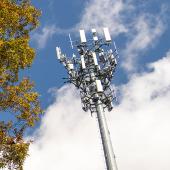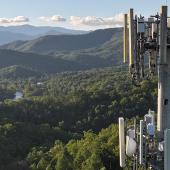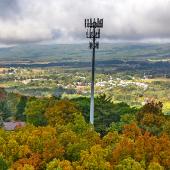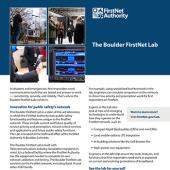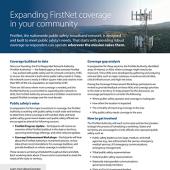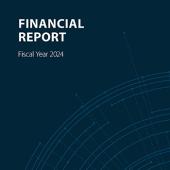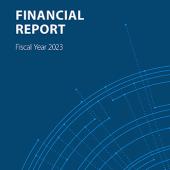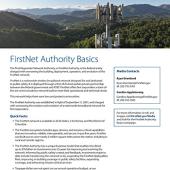What’s the news? AT&T is America’s public safety communications partner. In the nearly 5 years since we were selected by the First Responder Network Authority (FirstNet Authority) to build and operate FirstNet, we have moved quickly to bring more coverage, boost capacity and drive new capabilities for Texas first responders and the communities they serve – rural and urban.
Today, we cover nearly all of the state with FirstNet, Built with AT&T – helping to connect public safety agencies and organizations in more than 580 communities across Texas. That’s why we’re focused on increasing network capacity for Texas public safety by deploying Band 14 spectrum – nationwide, high-quality spectrum set aside by the federal government specifically for FirstNet. We’ve rolled out Band 14 on thousands of sites across Texas to provide public safety with truly dedicated coverage and capacity when they need it.
And more Texas first responders are gaining access to a one-of-a-kind 5G experience on FirstNet. 5G connectivity on FirstNet is now available in 17 locations, including Austin, Dallas, Houston and San Antonio. Public safety also has access to 5G+ (mmWave) spectrum in Dallas Love Field Airport, AT&T Dallas Stadium in Arlington, Toyota Center in Houston and the AT&T Center in San Antonio. And we’re continuing to roll out additional 5G connectivity for FirstNet in more communities nationwide.
But we aren’t stopping there. The FCC estimates that over 10,000 lives could be saved each year if public safety were able to reach callers just 1 minute faster. And since 80% of wireless calls take place indoors, in-building dedicated public safety connectivity is essential to public safety operations and overall safety. That’s why we are collaborating with Safer Building Coalition, the nation’s leading industry advocacy group focused on advancing policies, ideas, and technologies that ensure effective in-building communications capabilities for public safety personnel and the people they serve.
Why is this important? No connection is more important than one that could help save a life. Today, FirstNet is solving for common and long-standing communications challenges that first responders face – things like interoperability, network congestion and commercial network providers slowing public safety’s data connection. It’s giving them superior coverage for day-to-day response and life-saving missions. While commercial wireless offerings remain available to public safety, FirstNet continues to grow because it offers distinct advantages from those commercial offerings. FirstNet comes with unique features, functionality and dedicated spectrum when needed for the public safety community. That’s why public safety fought for their own, separate, dedicated platform, championing the vision that led to the creation of FirstNet.
How does this help bridge the digital divide? The FirstNet network expansion is one way we are helping ensure all of public safety – and the communities they serve – have access to critical connectivity to help meet the urgent challenges of today and tomorrow. We already cover more than 99% of the U.S. population today, but FirstNet is built for all public safety. That means every first responder – career or volunteer; federal, tribal, state or local; urban, suburban or rural.
And with FirstNet, it’s about where first responders need connectivity. That’s why the build is being done with direct feedback from public safety and local stakeholders. This feedback has been instrumental in deploying Band 14 spectrum across Texas. And it’s helped to launch new purpose-built FirstNet sites in rural and remote areas so far – including areas where emergency responses have been previously challenged. 20 counties are currently benefitting from this new infrastructure, which will help improve the overall coverage and network capacity experience for public safety on FirstNet and AT&T wireless customers in the area. Residents, visitors and businesses can take advantage of the AT&T commercial spectrum bands, as well as Band 14 when additional capacity is available.
What makes 5G on FirstNet “one of a kind?” FirstNet is not a commercial network. And that means our approach to 5G for public safety must be different from the way your friends and family experience 5G. With FirstNet, we’re taking the right steps for public safety in a way that meets their unique mission needs. While 5G connectivity will ultimately bring a combination of benefits like ultra-low latency and ultra-high speeds to support all kinds of users, it’s essential we approach 5G in a different way for first responders. That’s why first responders maintain voice communications with priority and preemption on LTE, while the FirstNet network determines the best route for data traffic, whether that’s 5G or LTE spectrum.
What is FirstNet? FirstNet is the only nationwide, high-speed broadband communications platform dedicated to and purpose-built for America’s first responders and the extended public safety community. Shaped by the vision of Congress and the first responder community following the 9/11 terrorist attacks, FirstNet stands above commercial offerings. It is built with AT&T in public-private partnership with the First Responder Network Authority (FirstNet Authority) – an independent agency within the federal government. With more than 19,500 agencies and organizations – accounting for more than 3 million connections nationwide1 – the FirstNet network is providing public safety with truly dedicated coverage and capacity when they need it, unique benefits like always-on priority and preemption, and high-quality Band 14 spectrum. These advanced capabilities enable FirstNet to help fire, EMS, law enforcement and more save lives and protect their communities.
Where can I find more information? For more about the value FirstNet is bringing to public safety, check out FirstNet.com. And go here for more FirstNet news.
Lisa Casias
Acting-CEO, FirstNet Authority
“FirstNet is a dedicated broadband platform for public safety, by public safety. We worked hand-in-hand with the Texas public safety community to understand their needs for the network. And this new infrastructure is a prime example of how that input and feedback is becoming reality. We look forward to supporting Texas first responders’ use of FirstNet to help them save lives and protect our communities.”


